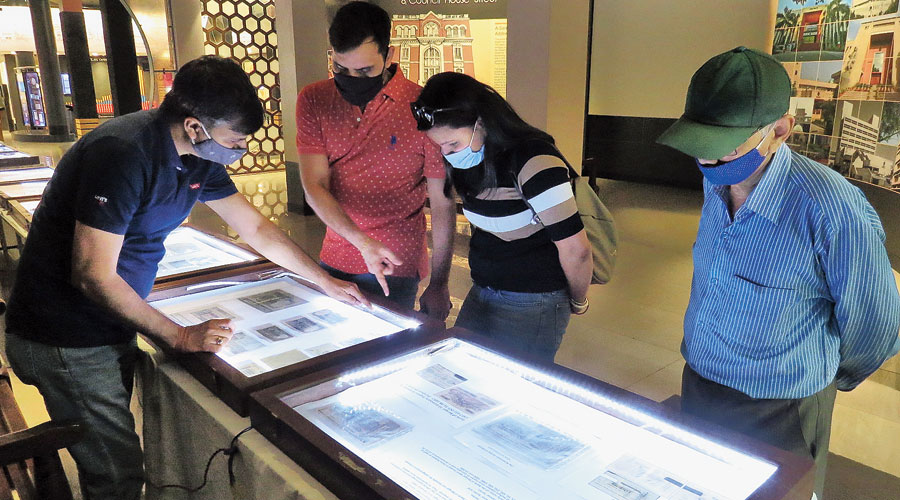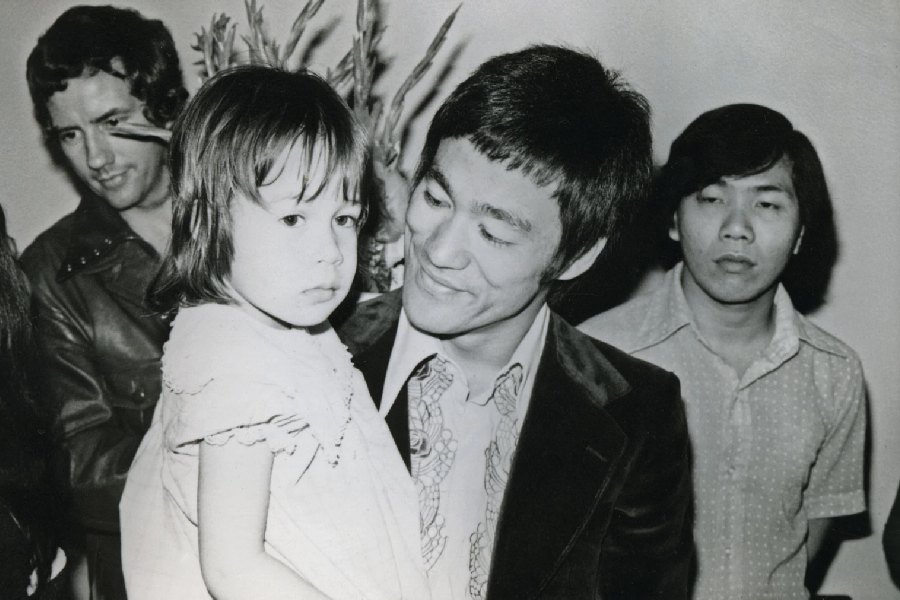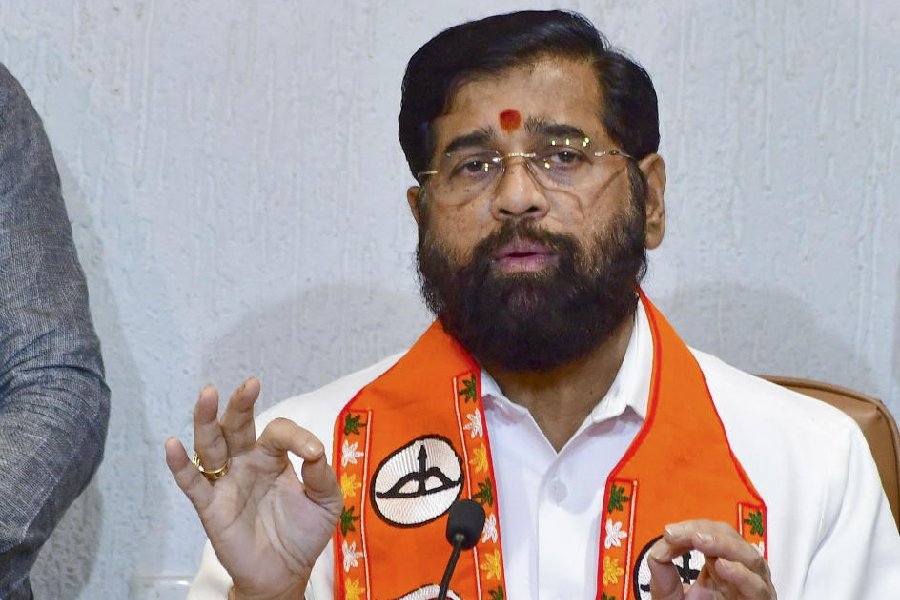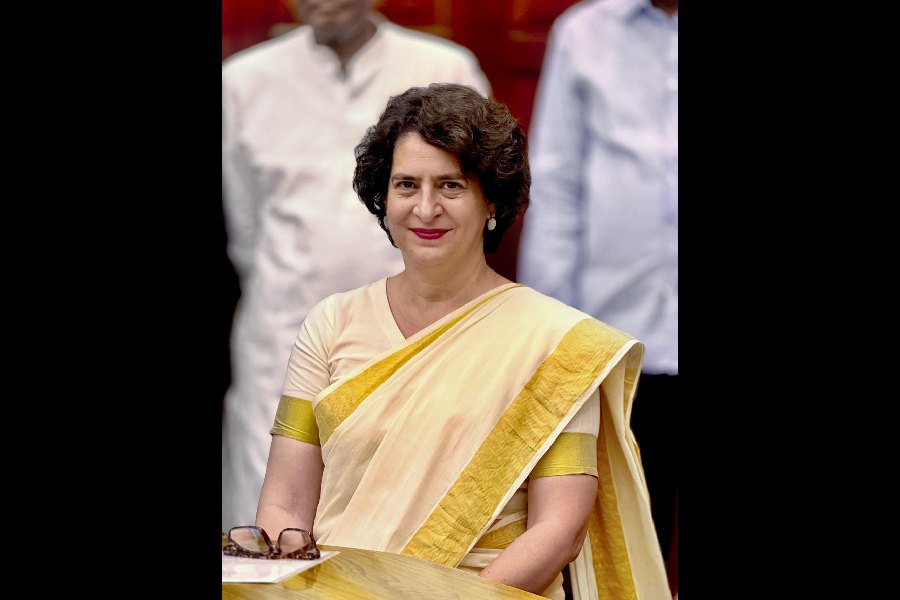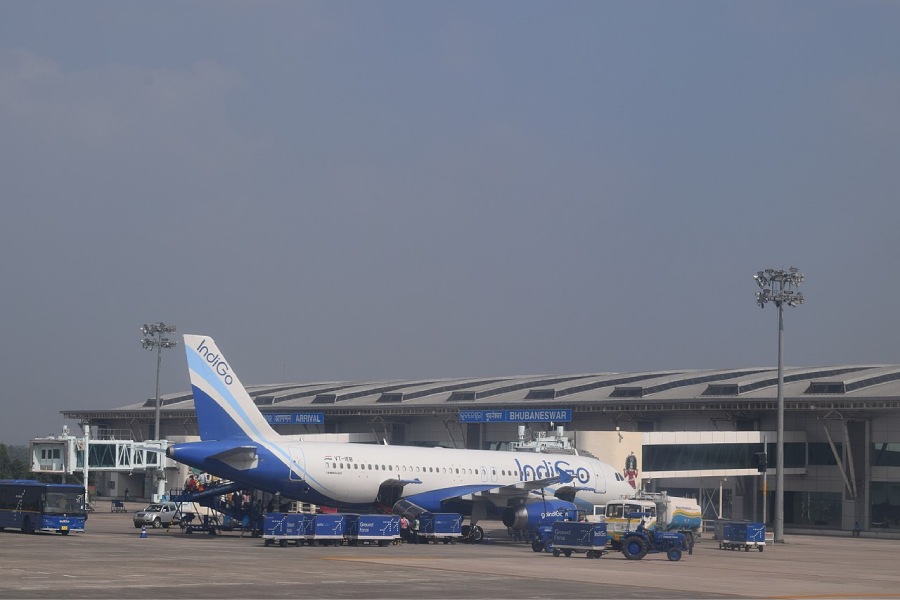The first banknotes of India would be cut in half and sent separately by post for security reasons. The recipient would paste them together and present them at the bank for encashment.
An exhibition on 200 years of Indian banknotes, from Bank of Bengal to the Reserve Bank of India (RBI), is under way at the RBI Museum in Council House Street, Dalhousie Square. Organised jointly by The Numismatic Society of Calcutta and the RBI, it showcases some of India’s earliest banknotes.
The notes have a corner cut off and a cancelled mark is stamped on each. “These were sicca rupee notes, which were used more like hundis, and could be encashed at the bank that issued them against the number of siccas, or silver coins, that their denomination suggested. Once encashed, they were cancelled this way,” explained Ravi Shankar Sharma, general secretary of the society, who is one of the nine collectors whose collections make up the exhibition.
According to Mahesh Kalra, curator of the museum, the exhibition was on the evolution of the banking system in India. “Many private banks went bust as they were not supported by the government. In the early 19th century, presidency banks came into being, starting with Bank of Calcutta in 1806, which was renamed Bank of Bengal in 1809 by an East India Company charter. They brought out India’s first government currency, starting with notes in 1812,” he said.
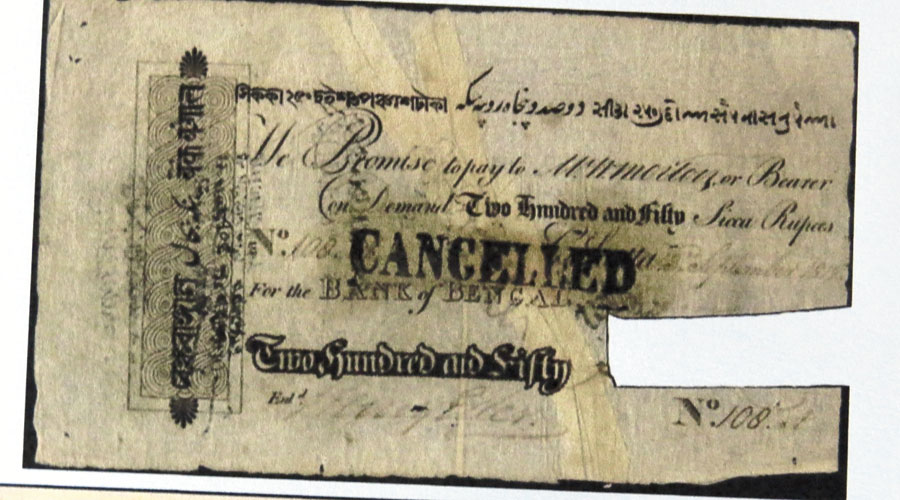
A specimen of India’s first banknotes, cut and cancelled on encashment. Picture by Sudeshna Banerjee
While the four earliest specimens on display are unifaced, the next lot has Commerce, the figure of a lady sitting on a chest of money. “Even the Confederate states in America used this figure,” Kalra pointed out.
The first one-rupee notes, issued during George V in 1917, came in booklets of 35 and had perforations at a side where they were torn off.
Then there are notes issued during the eras of Victoria, Edward VII and George V and the early issues of the RBI from 1938 to 1947. These have portraits of King George VI from 1938, signed by the second RBI Governor, J.B. Taylor and the third governor, C.D. Deshmukh, the first Indian governor of the RBI.
Another interesting group of exhibits is the Persian Gulf rupee notes. “These notes were used between 1959 and 1966 in the British protectorates of the Arabian peninsula surrounding the Persian Gulf. These areas today form the countries of Kuwait, Bahrain, Qatar, Oman, and the United Arab Emirates,” Sharma said.
The notes, he pointed out, were in designs very similar to the standard Indian notes but printed in different colours. While the one-rupee and 10-rupee notes were printed in red, the five-rupee notes were in orange and 100-rupee notes in green. The serial numbers issued in all denominations were prefixed by the letter Z.
The exhibition is on till Sunday and is open from 11am to 5pm.

